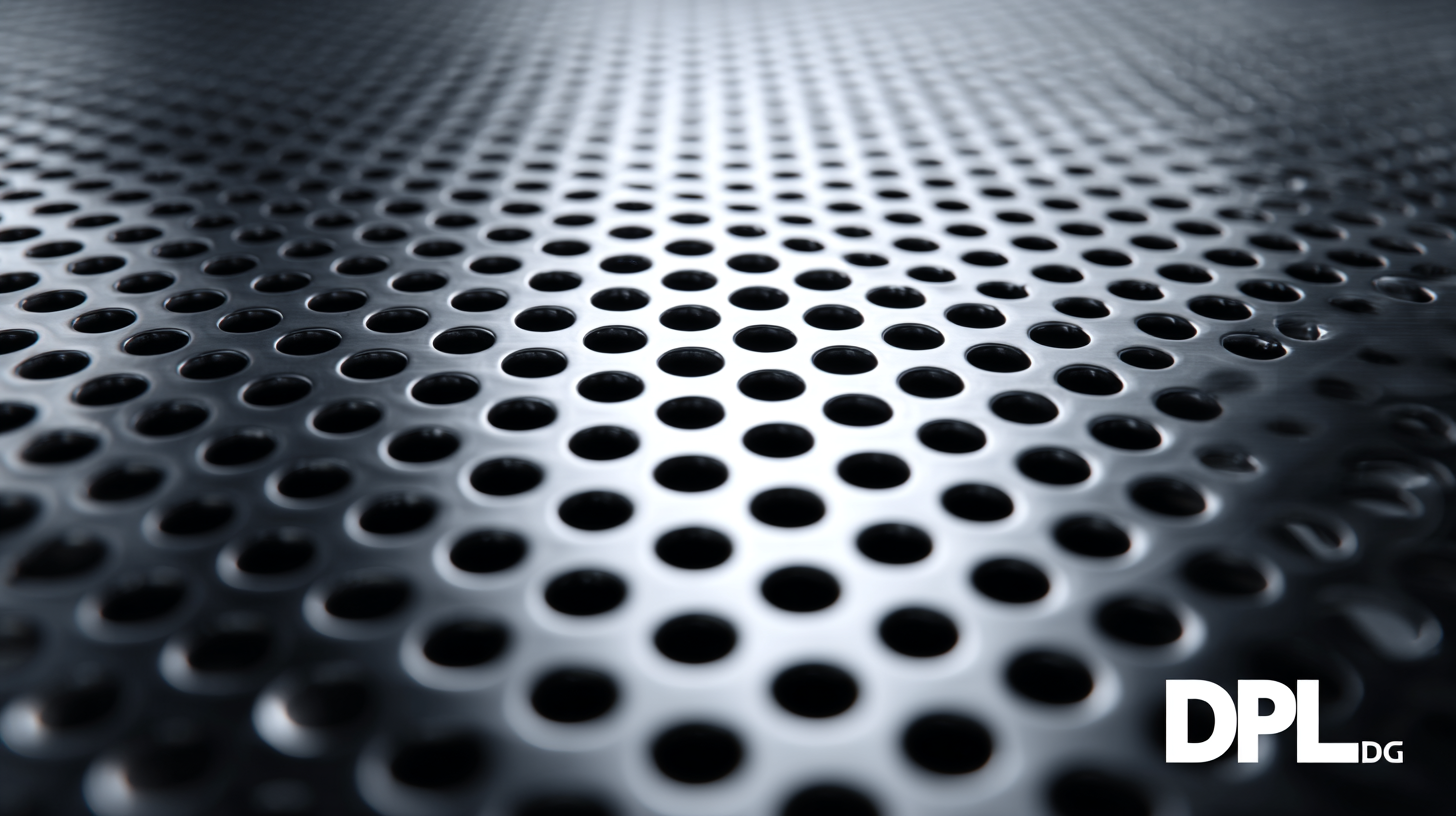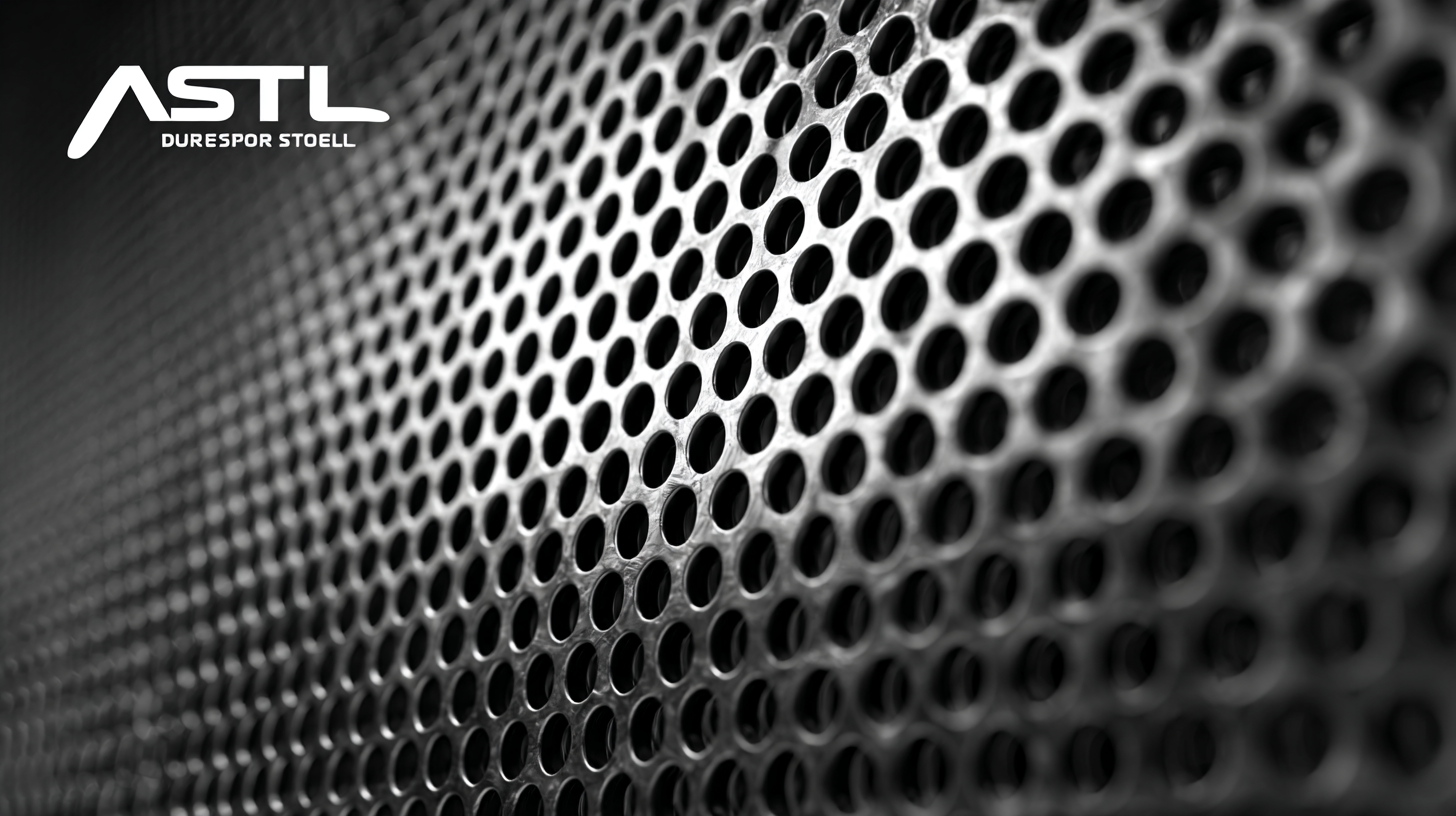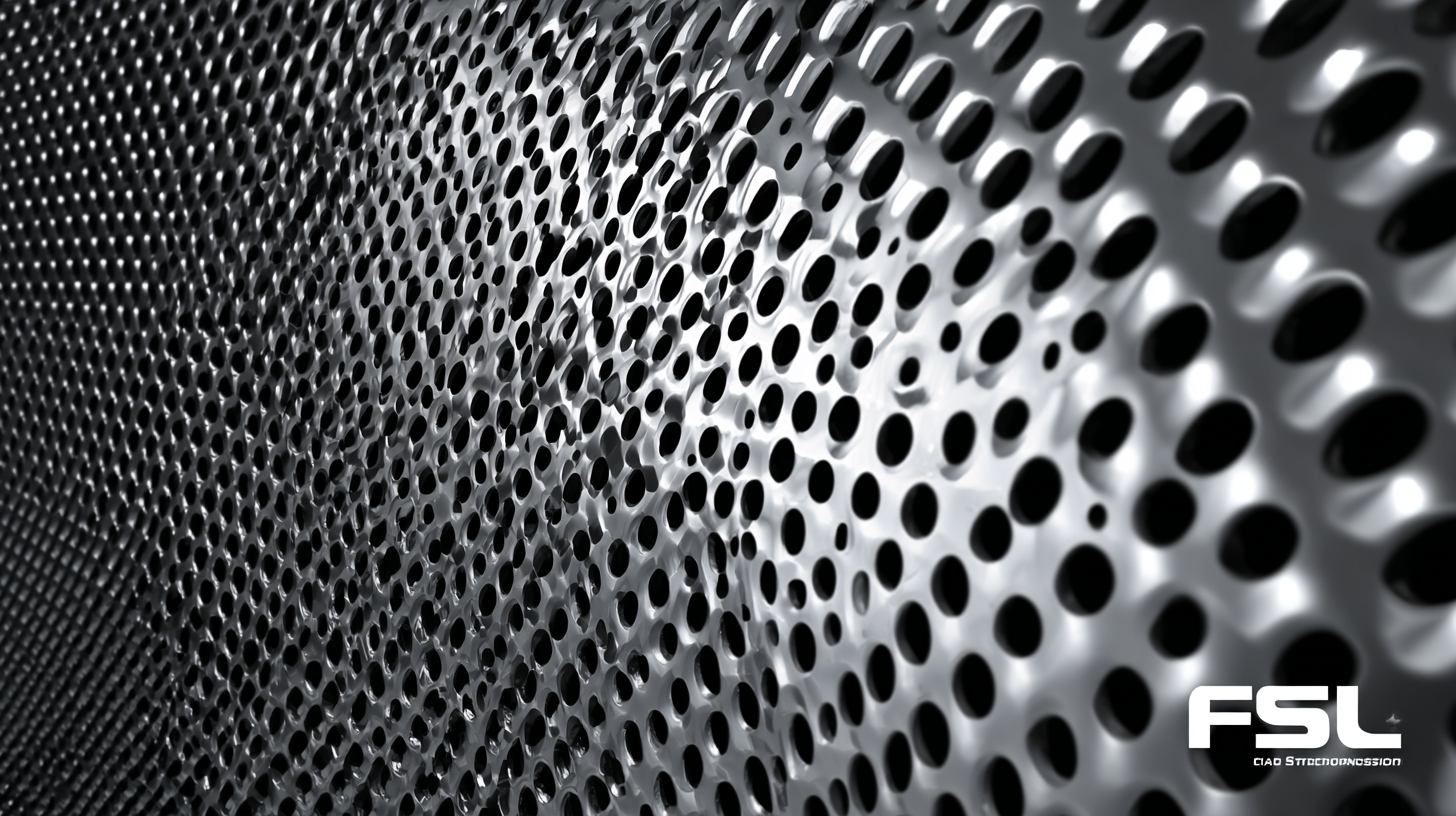 As the global construction and manufacturing industries increasingly prioritize innovation and sustainability, the demand for Perforated Plate Steel is anticipated to witness significant growth. According to the MarketsandMarkets report, the global perforated metal market is projected to reach USD 1.12 billion by 2025, driven by the rising need for lightweight yet durable materials in various applications, from architectural designs to industrial processes. This growth trajectory reflects a broader shift towards sustainable practices, as perforated plate steel enhances energy efficiency and reduces material waste. Furthermore, a study by Research and Markets highlights that advancements in automated manufacturing and design technologies are reshaping the production landscape, allowing for more intricate designs while minimizing costs. As industries evolve, understanding the dynamics of Perforated Plate Steel demand in global markets is crucial for stakeholders aiming to leverage these innovations for future success.
As the global construction and manufacturing industries increasingly prioritize innovation and sustainability, the demand for Perforated Plate Steel is anticipated to witness significant growth. According to the MarketsandMarkets report, the global perforated metal market is projected to reach USD 1.12 billion by 2025, driven by the rising need for lightweight yet durable materials in various applications, from architectural designs to industrial processes. This growth trajectory reflects a broader shift towards sustainable practices, as perforated plate steel enhances energy efficiency and reduces material waste. Furthermore, a study by Research and Markets highlights that advancements in automated manufacturing and design technologies are reshaping the production landscape, allowing for more intricate designs while minimizing costs. As industries evolve, understanding the dynamics of Perforated Plate Steel demand in global markets is crucial for stakeholders aiming to leverage these innovations for future success.
As sustainability continues to reshape industries worldwide, the demand for perforated plate steel is poised for significant growth in 2024. The trend towards environmentally-friendly building materials is becoming increasingly prominent, particularly in construction and architecture. This shift is highlighted by a surge in the popularity of rainscreen cladding, which utilizes perforated plate steel for its aesthetic appeal and functional benefits. According to recent market research, the global demand for metal cladding is on an upward trajectory, reflecting a broader movement towards sustainable building practices.
Furthermore, the emphasis on sustainability resonates not only in building materials but across various markets. The metal cladding sector is expected to lead this charge, driven by innovations that enhance the eco-friendliness of materials and their lifecycle management. With the global market for building materials projected to accelerate significantly, the perforated plate steel segment is anticipated to flourish as architects and builders prioritize sustainability. As reported, the intersecting trends of metal cladding and the demand for perforated materials are setting the stage for a robust market landscape in 2024 and beyond, fueled by ongoing innovations that align with environmentally-conscious standards.
The landscape of perforated plate steel manufacturing is undergoing a revolutionary transformation, driven by innovative techniques and sustainability practices.
 Advanced manufacturing processes such as laser cutting and automated punching are streamlining production, enhancing precision, and reducing waste.
According to a recent market report by Research and Markets, the global market for perforated plates is projected to reach USD 3.5 billion by 2026, growing at a compound annual growth rate (CAGR) of 5.6%. This surge is largely influenced by the construction and automotive industries, which are now favoring lightweight and customizable materials, bolstered by cutting-edge technologies.
Advanced manufacturing processes such as laser cutting and automated punching are streamlining production, enhancing precision, and reducing waste.
According to a recent market report by Research and Markets, the global market for perforated plates is projected to reach USD 3.5 billion by 2026, growing at a compound annual growth rate (CAGR) of 5.6%. This surge is largely influenced by the construction and automotive industries, which are now favoring lightweight and customizable materials, bolstered by cutting-edge technologies.
Sustainability is another pivotal factor reshaping the future of perforated plate steel. Manufacturers are adopting eco-friendly practices, such as recycling steel scrap and utilizing energy-efficient machinery. The World Steel Association's recent findings indicate that recycling steel can save up to 75% of the energy required to produce new steel. This commitment to sustainability not only minimizes environmental impact but also appeals to environmentally-conscious consumers, driving demand in global markets. As innovations in manufacturing techniques continue to evolve, the industry is poised to meet the growing demand for sustainable and high-performance materials.
The demand for perforated plate steel is set to experience significant growth, particularly in key regions that are at the forefront of innovation and sustainability. As industries increasingly prioritize environmentally friendly practices, perforated plate steel is becoming a favored choice due to its versatility and efficiency in applications ranging from construction to automotive manufacturing. Regions such as North America and Europe are leading this growth, driven by stringent regulations and a push for more sustainable materials.
Furthermore, emerging markets in Asia-Pacific are also contributing to the rising demand. With rapid industrialization and urbanization, countries in this region are investing in infrastructural development, which in turn boosts the need for durable and efficient materials like perforated plate steel. The combination of advanced manufacturing techniques and a growing awareness of sustainability among consumers is setting the stage for an upward trajectory in perforated plate steel sales, shaping a future that aligns with both innovation and ecological considerations.
| Region | Market Size (Million USD) | Growth Rate (%) | Key Drivers |
|---|---|---|---|
| North America | 250 | 4.5 | Construction, Architecture |
| Europe | 300 | 3.8 | Sustainability Regulations |
| Asia-Pacific | 400 | 5.2 | Industrial Growth, Urbanization |
| Latin America | 150 | 2.9 | Infrastructure Projects |
| Middle East & Africa | 100 | 3.0 | Oil & Gas Industry |
As the demand for perforated plate steel continues to grow, the integration of recycled materials into its production process is becoming increasingly essential. The transition towards a circular economy emphasizes the importance of sustainability, and recycled steel emerges as a viable alternative to conventional raw materials. By utilizing scrap metal and other recycled resources, manufacturers not only reduce their carbon footprint but also minimize waste, aligning their operations with modern ecological practices.
Moreover, innovations in recycling technologies enhance the efficiency and quality of recycled materials, making them comparable to virgin steel. This advancement allows for the continued use of high-performance perforated plate steel while supporting environmental goals. Companies that invest in sustainable practices are likely to gain a competitive edge in the global market, as consumers and industries alike demand products that contribute to a greener future. The future of perforated plate steel production will undoubtedly hinge on the effective incorporation of recycled materials, showcasing how industry innovation and sustainability can work hand in hand.
The global demand for perforated plate steel is poised for substantial growth, driven by emerging applications and innovative technologies. According to a report from MarketsandMarkets, the perforated metal market is expected to reach $2.4 billion by 2026, marking a significant increase from $1.7 billion in 2021, with a CAGR of 6.5%. Industries such as construction, automotive, and aerospace are increasingly integrating perforated plate steel due to its lightweight yet durable nature, particularly in noise control, filtration, and architectural design applications.

Moreover, advancements in manufacturing processes, such as laser cutting and CNC machining, are enhancing the precision and efficiency of perforated plates, making them more attractive for various applications. For instance, the use of perforated metal in green building designs not only contributes to aesthetic appeal but also promotes sustainability by optimizing energy efficiency and improving indoor air quality. The integration of sustainable practices in production, combined with the growing demand for eco-friendly materials, is likely to position perforated plate steel as a vital component in the circular economy, thereby increasing its relevance in global markets.
